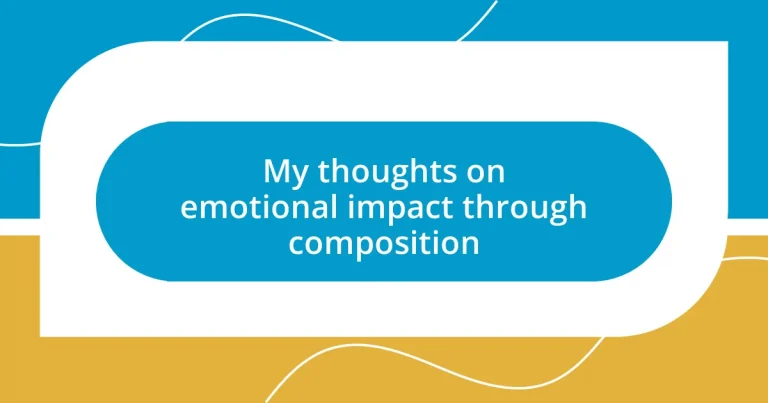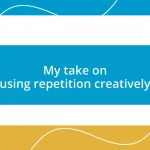Key takeaways:
- Emotional impact in composition stems from vulnerability, detail, and sensory language, enhancing connection with readers.
- Rhythm and harmonies in writing mirror emotional states, with techniques like synchopation and varied pacing deepening the reader’s experience.
- Practical exercises, such as scene writing and journaling, can effectively explore and express emotions, fostering personal insights and connections.
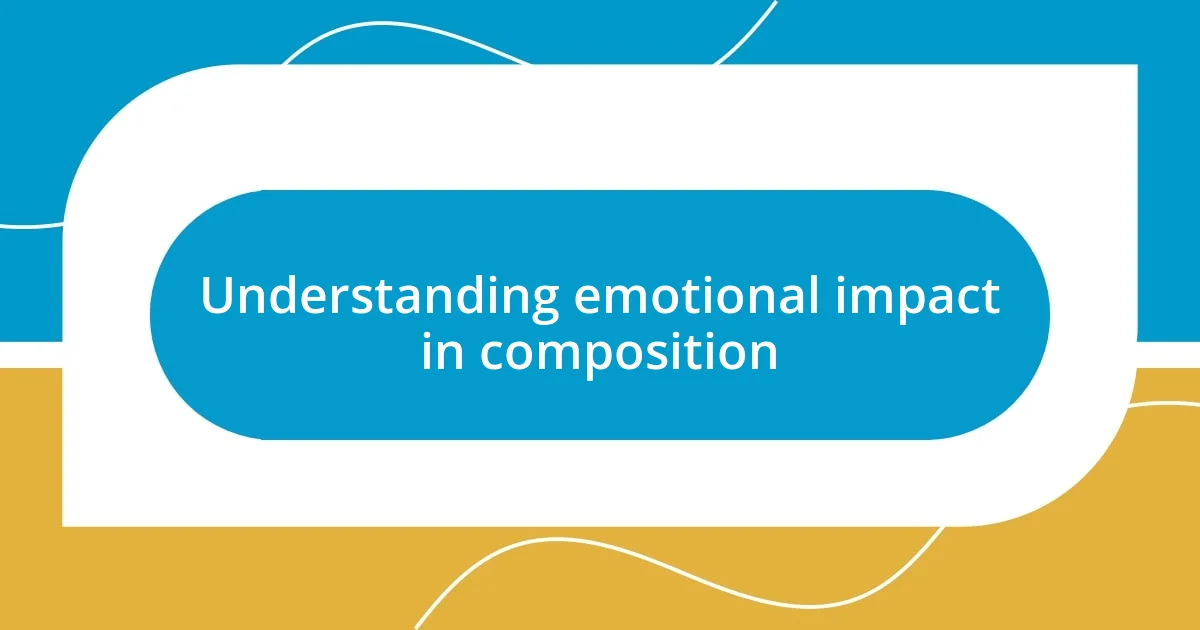
Understanding emotional impact in composition
I’ve always found that emotional impact in composition is like a secret ingredient that can transform a piece from just words on a page into a heartfelt experience. When I craft a narrative, I constantly think about how my choices—whether in tone, imagery, or rhythm—can influence the reader’s feelings. Have you ever noticed how a single line can evoke tears or laughter? That’s the power of emotional resonance.
One of my most memorable experiences was writing about a personal loss. As I poured my emotions onto the page, I realized how essential vulnerability is to connect with others. It became clear that sharing my raw feelings allowed readers to feel their emotions too. I often wonder, how can we be more open in our compositions to elicit empathy and understanding? This openness is what deepens our connections through writing.
Moreover, I’ve discovered that emotional impact often lies in the details. For instance, choosing specific, sensory language can create vivid images that resonate deeply with readers. I remember once describing the sound of soft rain against a window during a moment of reflection, and I could almost feel the atmosphere shift. How do we ensure our descriptions are compelling enough to evoke those shared experiences? It’s all about balance—finding the right words to make readers feel like they’re not just observing, but part of the emotional journey.
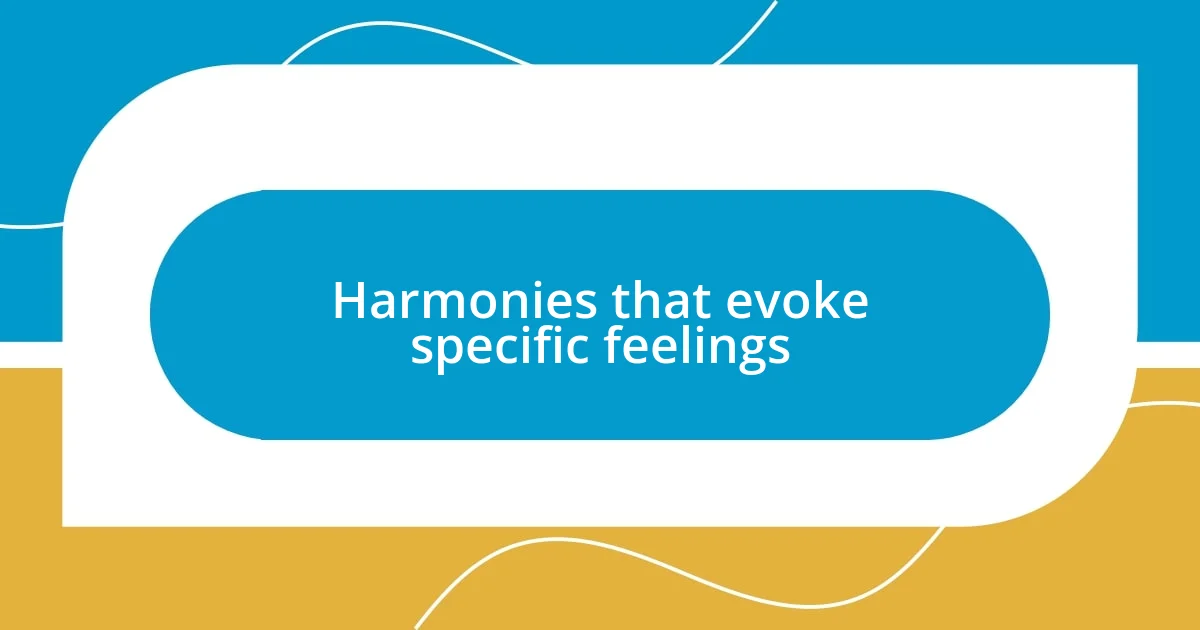
Harmonies that evoke specific feelings
Harmonies in music often parallel the emotional undertones in writing. For instance, major chords frequently convey happiness and triumph, while minor chords tend to evoke sadness or introspection. I recall my first time composing a melody using a minor scale; the somber notes seemed to wrap around me, leading me to reflect on my own experiences of loss. It was a powerful reminder of how harmonies can mirror and magnify our emotional states.
In my writing, I’ve discovered that certain rhythmic structures also play a crucial role in evoking feelings. Short, staccato phrases can generate excitement or urgency, while longer, flowing sentences often create a sense of calm or melancholy. I once experimented by altering the pacing in a narrative about a tense moment. The abrupt shifts in rhythm amplified the anxiety of the scene, making it feel almost palpable to my readers. It’s fascinating how subtle adjustments can shift the reader’s perception dramatically.
When it comes to harmonies, the combination of notes can create a rich emotional tapestry. Just as a blend of different musical scales will stir a variety of feelings, layering diverse writing techniques can enhance emotional depth. I once combined vivid imagery with rhythmic variety in a piece about a joyous family reunion, weaving together laughter and love. The result felt like a symphony of emotions, drawing readers into a collective experience. It’s all about experimenting with different elements and allowing the harmonies of our writing to resonate with the audience.
| Harmony Type | Emotional Effect |
|---|---|
| Major Chords | Joy, Triumph |
| Minor Chords | Sadness, Introspection |
| Staccato Rhythms | Excitement, Urgency |
| Flowing Sentences | Calm, Melancholy |
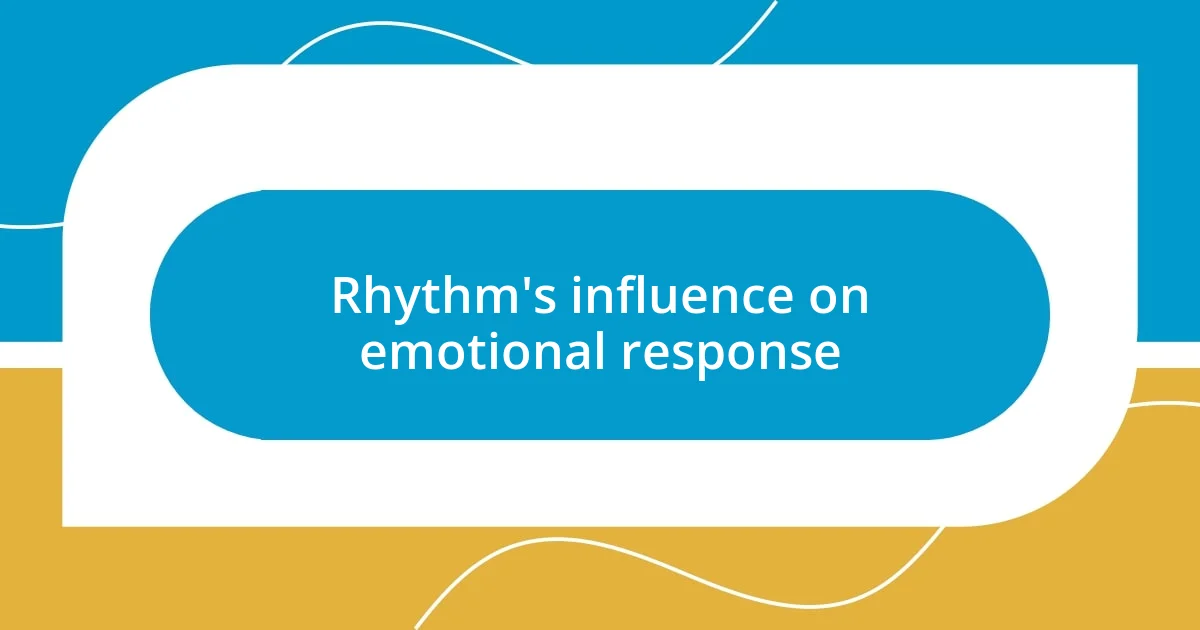
Rhythm’s influence on emotional response
When I reflect on rhythm, it strikes me how deeply it shapes our emotional responses. It’s almost like a heartbeat coursing through a piece of writing. I remember editing a poem where I played with the line lengths—short lines mimicked quick, excited thoughts, while longer lines gave weight to reflection. Readers often commented how they felt their own hearts race alongside the text, proving that rhythm isn’t just a technical element; it’s a dynamic force that can elevate emotion.
- Syncopation: Creates an unexpected feeling, evoking surprise or tension.
- Repetition: Reinforces emotions, making moments feel urgent or persistent.
- Varied Pacing: Shifting between fast and slow can mirror life’s emotional ebbs and flows.
- Use of Silence: Pauses can heighten anticipation, allowing emotions to linger in the air.
Recently, I experimented with rhythmic patterns in a piece focused on a nostalgic memory with friends. By mixing quick, punchy phrases with slower, reflective sentences, I could guide the reader through the joy of reminiscing and the bittersweet longing that often accompanies such moments. It felt like creating an emotional rollercoaster, where the rhythm itself was a thrilling ride, reminding me that the way I structure my sentences can evoke just as much feeling as the words I choose.
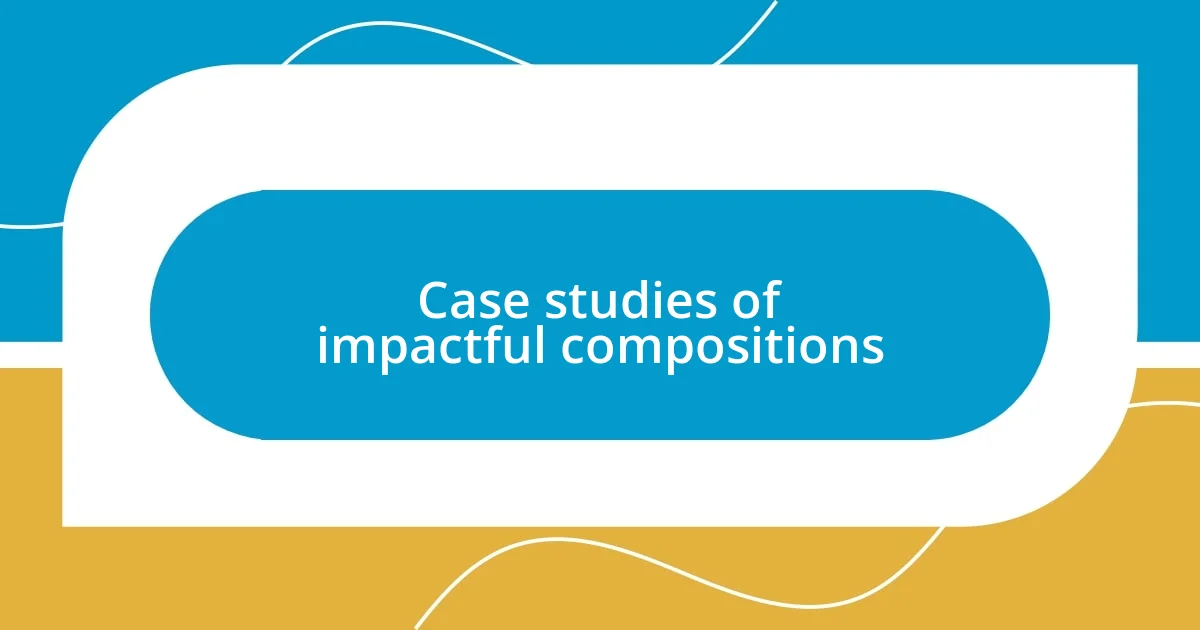
Case studies of impactful compositions
One case that stands out to me is Aaron Copland’s Appalachian Spring. The piece is a brilliant blend of major harmonies and flowing melodies, capturing the essence of hope and renewal. When I first listened to it, I felt an overwhelming sense of warmth, as if I were enveloped in a gentle hug. This emotional resonance wasn’t just incidental; it was a deliberate choice by Copland to evoke feelings of triumph and peace, transforming a scenic landscape into an immersive auditory experience.
Then there’s the use of contrasting rhythms illustrated in Beethoven’s Symphony No. 7. The rhythmic intensity combined with dynamic shifts created a palpable tension that invites listeners to dance along. I remember the first time I heard the second movement; the unexpected pauses made my heart race. How could something as simple as shifts in timing evoke such deep emotional responses? It reminds us that the manipulation of rhythm can turn music into a conversation, one that speaks directly to our feelings.
Another fascinating example is Claude Debussy’s Clair de Lune. The soft yet poignant piano cascades instantly transported me to a serene night under the stars. I often think about what makes this piece so emotionally charged. It’s the delicate balance of major and minor tones, creating a bittersweet longing that resonates deeply within me. Each note feels like a whisper, drawing me into a reflective state. This proves that the interplay of musical composition can evoke a vast spectrum of emotions, often reflecting our own inner feelings in complex and unexpected ways.
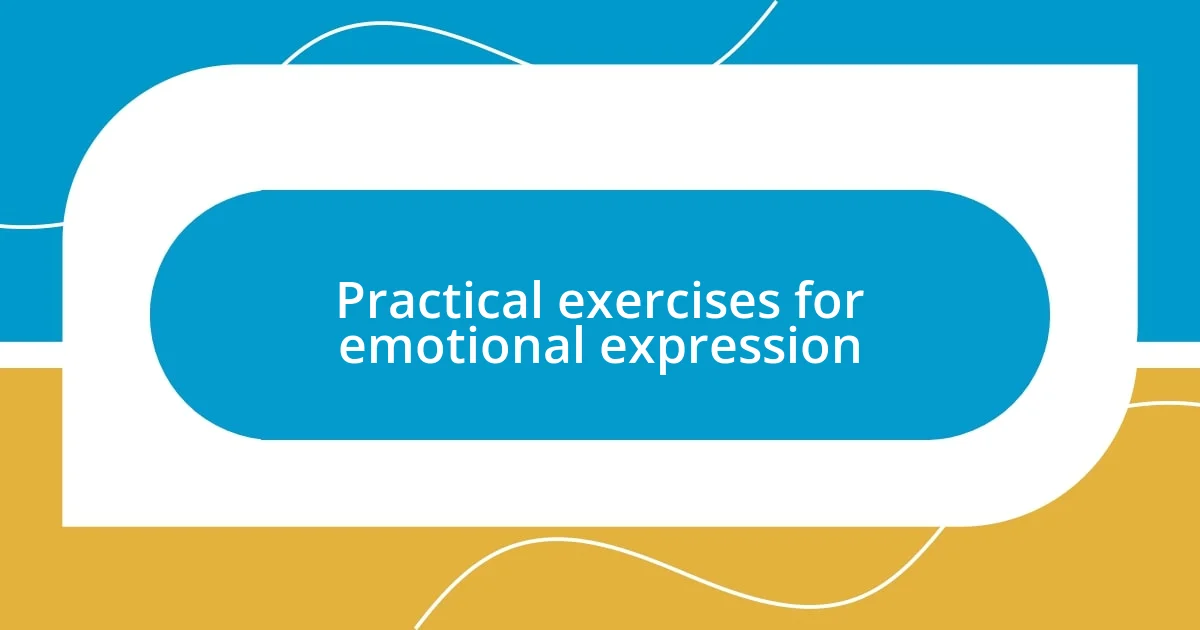
Practical exercises for emotional expression
Exploring emotional expression through writing can be incredibly rewarding. One exercise I like to use is to write a short scene based on a strong emotion I’ve experienced, like joy or sadness. I let the feeling wash over me, then translate it into vivid imagery and sensory details. By grounding the emotion in a specific moment, I can effectively communicate its depth, allowing readers to connect on a personal level. Have you ever noticed how certain memories can evoke powerful feelings just by recalling small details?
Another practical approach is journaling with prompts that target emotional exploration. I often write a paragraph beginning with, “Today, I felt…” and dive into the reasons behind that feeling. This intentional focus allows me to uncover layers of emotion I might have overlooked. I remember one instance when a simple prompt about anger led me to reflect on connections with friends, which ultimately transformed my frustration into a deeper understanding of my relationships. It’s amazing how a few simple words can open up a whole world of introspection.
Lastly, I frequently engage in free writing where I set a timer for 10 minutes and write without stopping. This flow can unlock emotions I didn’t even realize were there. One time, I found myself pouring out feelings of anxiety about an upcoming life change. The act of writing became a cathartic release, transforming uncertainty into clarity. I encourage you to try this exercise—what might you uncover beneath the surface of your thoughts?












